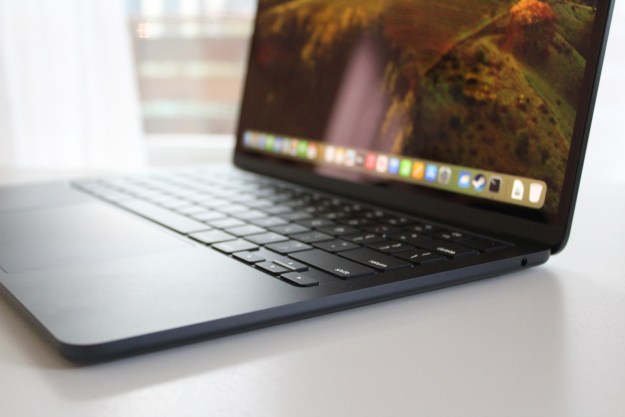
The news seemingly points to an updated 13-inch MacBook Pro that could be teased during Apple’s WWDC 2016 event kicking off on June 13. The report indicates that Apple already has the hinge in hand, but doesn’t confirm an actual showing during the conference. After all, Apple didn’t wait for WWDC to launch its sleek new 12-inch MacBooks as some of us presumed would happen, now did it?
News of the use of MIM hinges in new MacBook Pros first appeared back in April. A report stemming from Apple’s supply chain indicated that Apple was being supplied with the next-generation hinges by Amphenol, a hinge maker based in the United States, and the same company that supplies Microsoft with that unique dynamic fulcrum hinge found on the latest Surface Book Pro. It’s of course also possible that Apple actually has two MIM hinge suppliers for its upcoming MacBook Pros.
So what’s so special about these hinges? The metal injection molding process combines two technologies: powdered metallurgy and plastic injection molding. Instead of manually shaping metal, designers can create whatever shape they want by way of a pre-designed mold. Essentially, the resulting product can be created in a high volume and shaped in a single process, speeding up the delivery process and reducing manufacturing costs.
Thanks to this technique, the hinges can be designed to be thinner yet sturdy, and produced at a quick rate with low material waste. Amphenol even states that the MIM method prevents corrosion and provides a resistant polish. A chart provided by the company shows that MIM technology is capable of designs with a high complexity, has a tolerance of 0.3 to 0.5 percent, a theoretical metal density of 97 to 99 percent, and a minimum wall size on products of a mere 0.4mm. The machining process is only capable of 0.5mm.
That said, the new 13-inch and 15-inch MacBook Pro units are expected to be released later this year. Previous rumors pegged their release window to be around the fourth quarter of 2016, with the 13-inch model possibly arriving in September and the 15-inch model hitting the streets in November. They’ll reportedly pack a special OLED touch bar above the keyboard that will support Apple’s Touch ID fingerprint security and replace the physical function keys.
In addition to the OLED bar, the new MacBook Pros will likely include USB Type-C and Thunderbolt 3 connectivity, and a thinner chassis than what’s seen on the current 13-inch and 15-inch models. The super-thin (and sturdy) MIM hinge should help Apple achieve that sexy slim form factor it’s seemingly trying to achieve with this new 2016 generation.
As for Jarllytec and the hinges it’s selling to Apple, the company reportedly saw revenue rise over 29 percent in May when compared to the previous month, representing a 107-percent surge when compared to the same month in 2015. The sales performance was higher than expected that month due to the MIM hinges it manufactured for Apple’s upcoming 13-inch MacBook Pro laptops.
Editors' Recommendations
- Apple already has its next big chip, but you may never see it
- MacBook Pro 16 vs. MacBook Pro 14: The important differences
- Why you should buy a MacBook Pro instead of a MacBook Air
- Which color MacBook should you buy? Here’s how to pick
- Why you should buy a MacBook Air instead of a MacBook Pro


